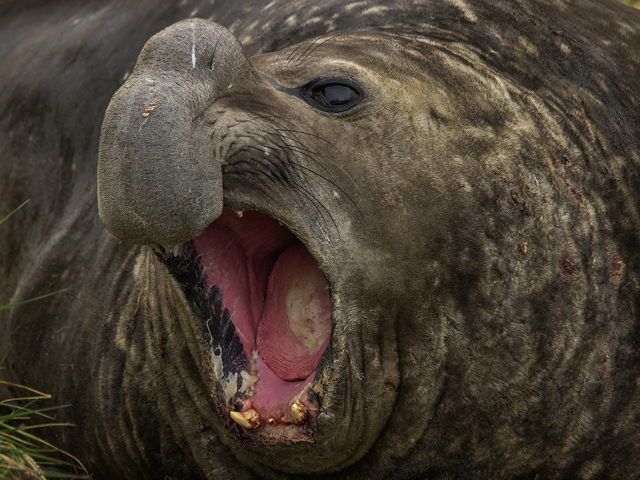South Georgia
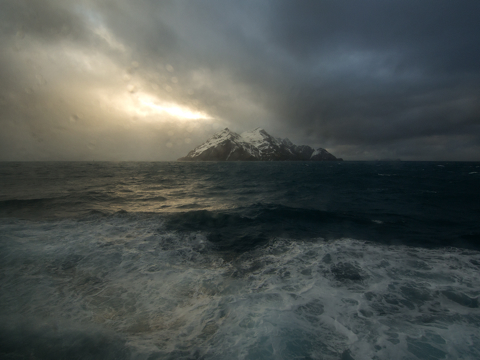
Seas in South Georgia
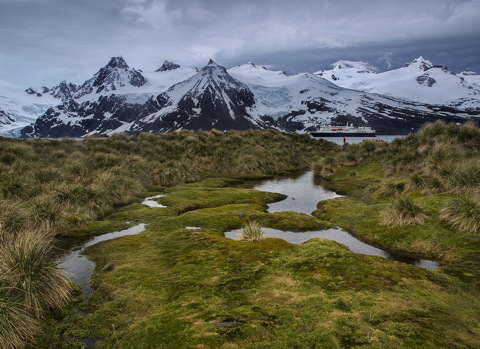
King Haakon Bay, South Georgia
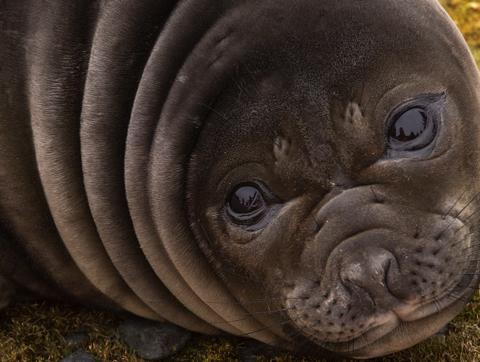
Sea lion pup
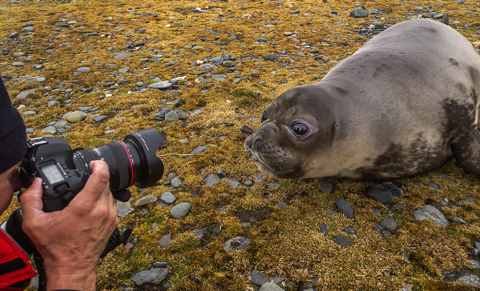
Posing for a photo
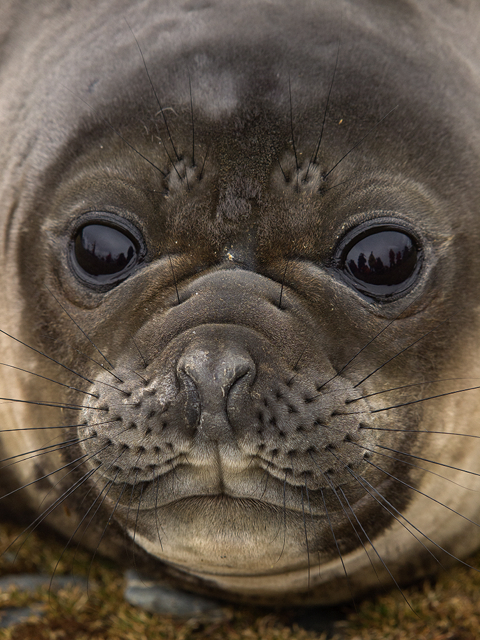
Sea lion pup
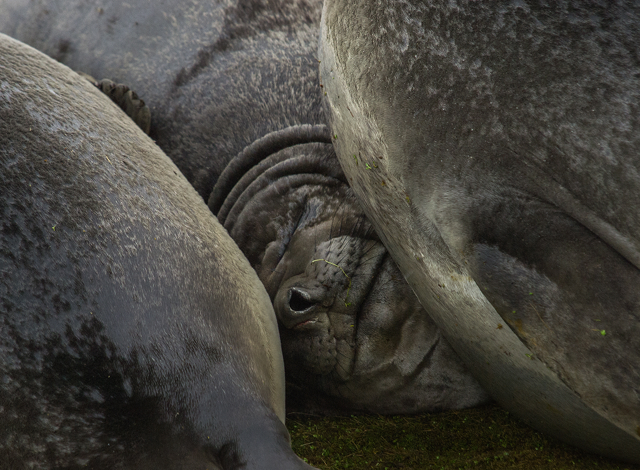
Crowded sleeping conditions!
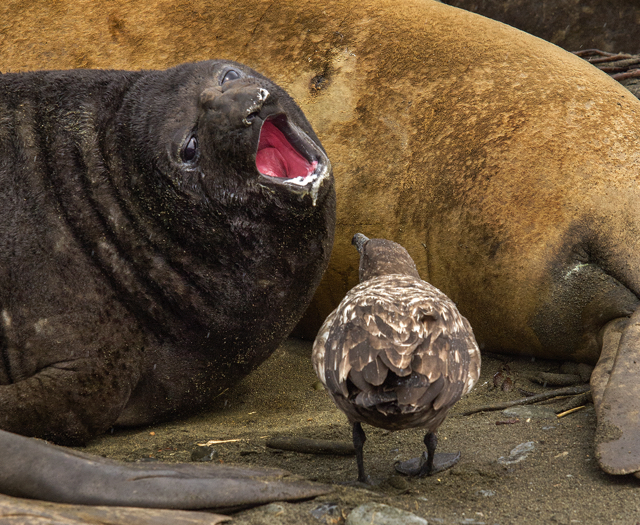
Skua trying to sneak in and grab sea lion drool
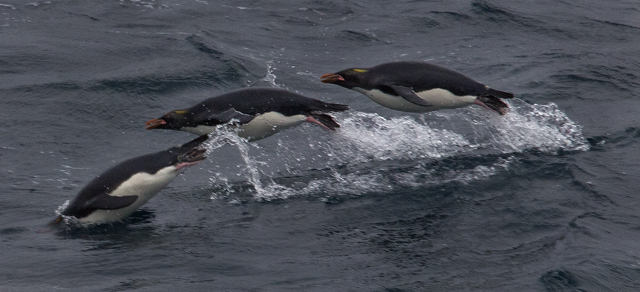
Penguins "porpoising" as they travel in Southern Ocean
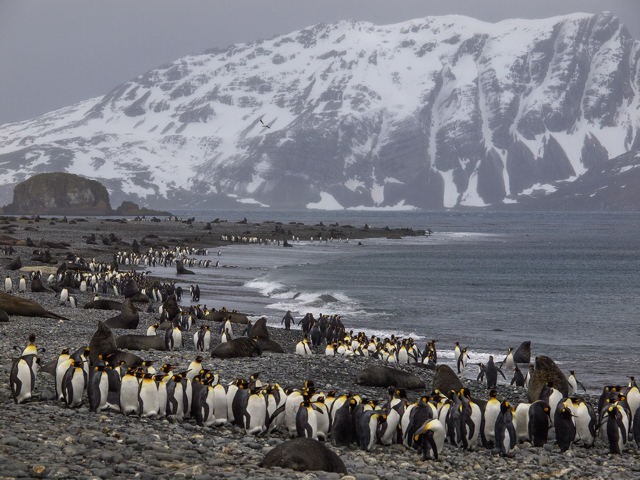
Along beach on Bay of Iles
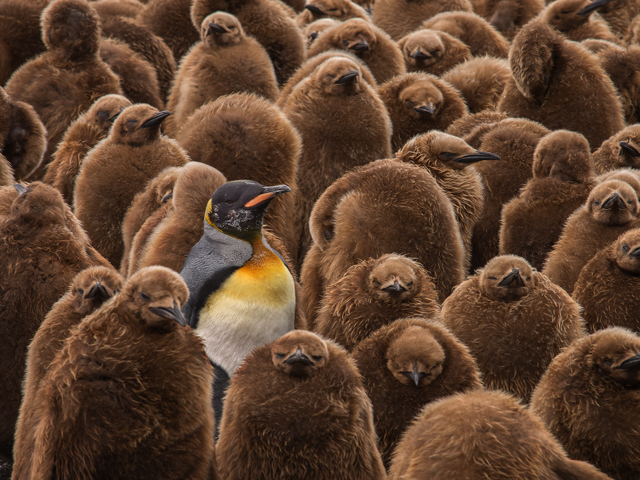
King penguin chicks and mature -- Olympus OM-D 50-200mm lens
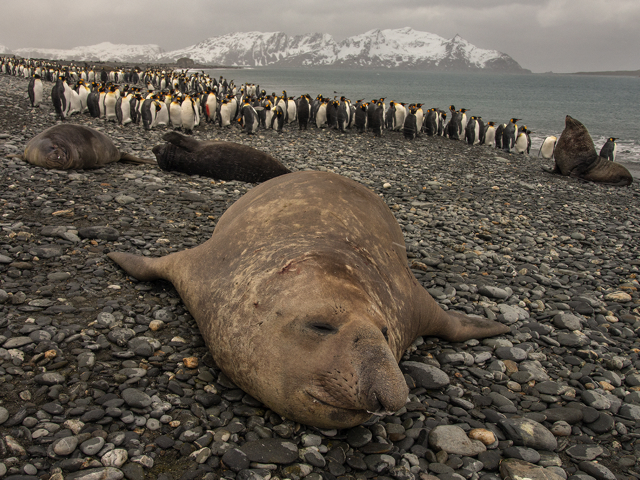
Elephant seal along beach on Bay of Iles -- Olympus OM-D 12-50mm lens
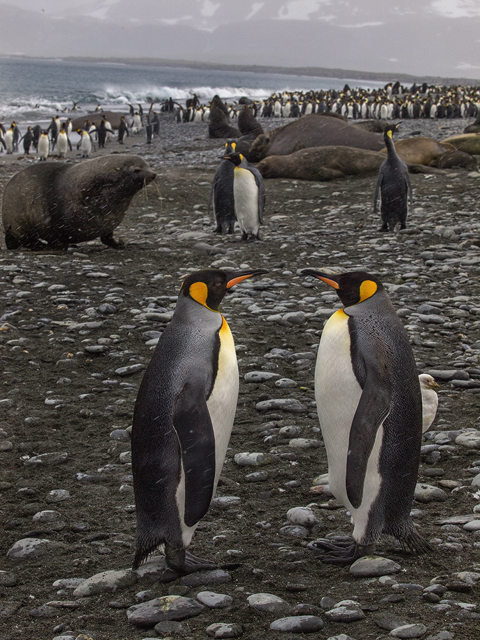
Life on the beach
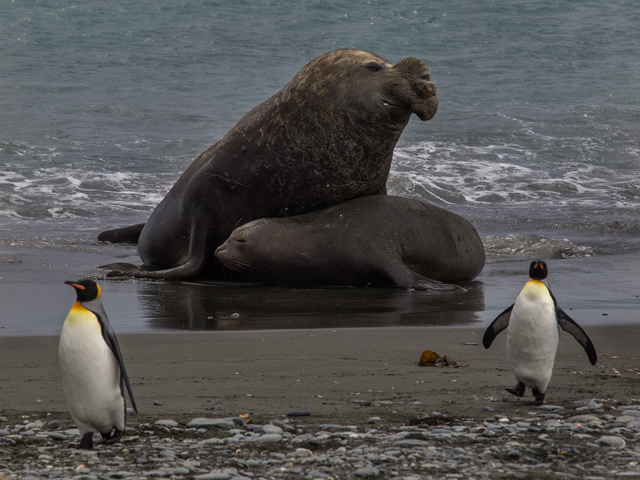
Elephant seals courting ritual
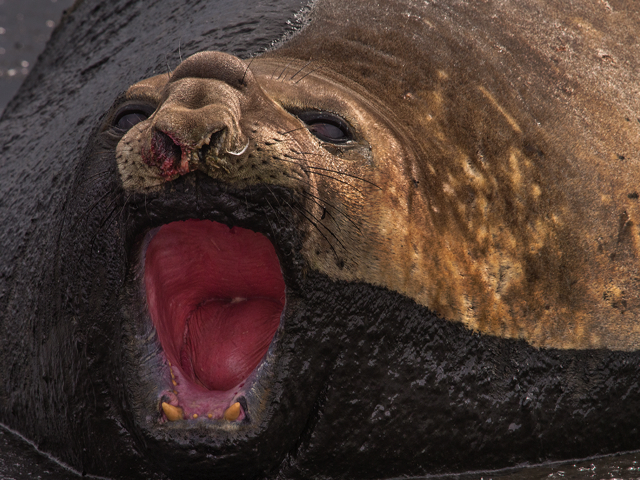
muddy elephant seal -- Olympus OM-D 50-200mm lens
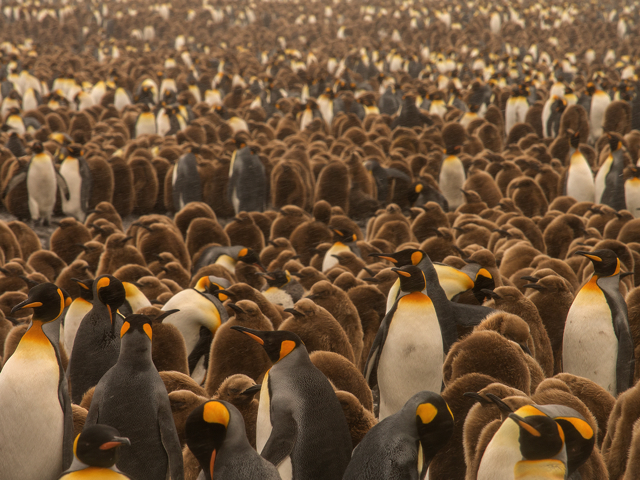
Penguin colonies
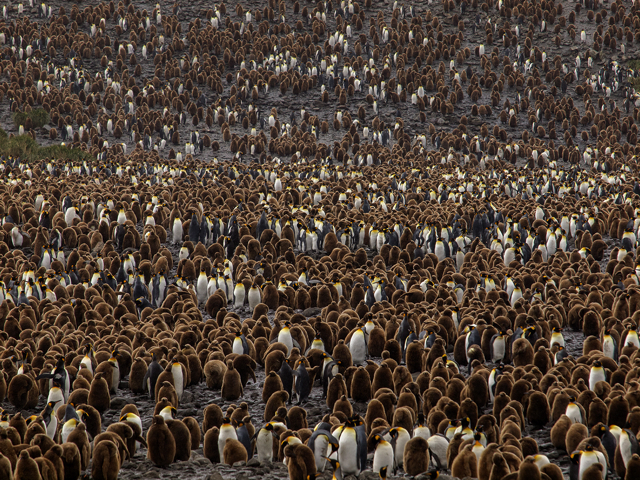
Some of the huge colonies of penguins
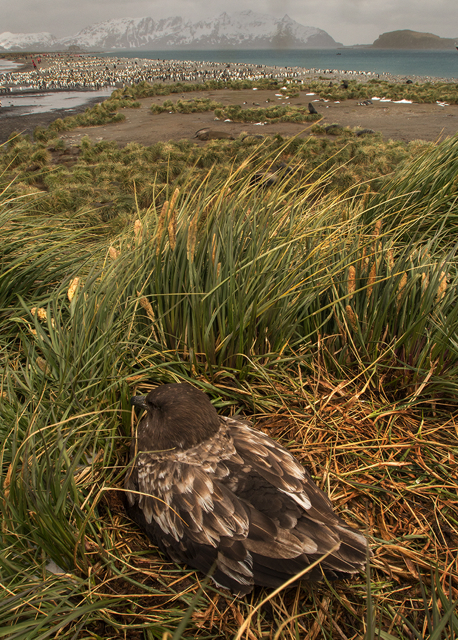
Skua nest overlooking Bay of Iles -- Olympus OM-D 12-50mm lens
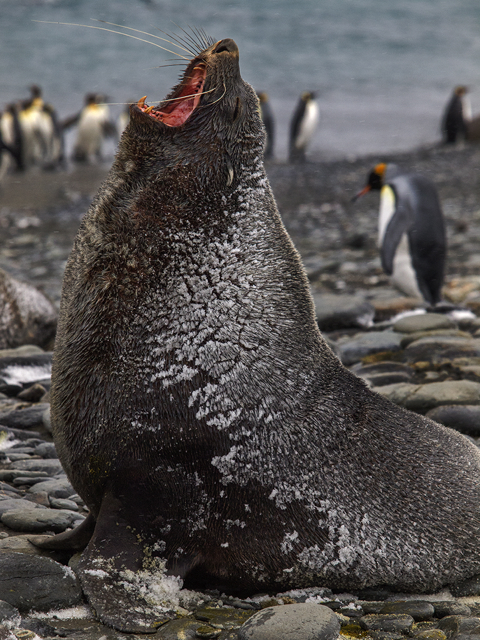
Fur seal on beach
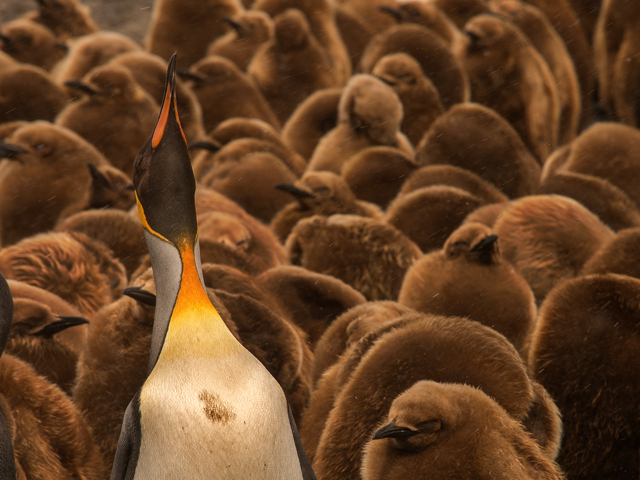
King penguin and downy chicks
After a two-day sail from Port Stanley in the Falklands, we arrived in South Georgia this morning. A few hours before arriving, we crossed the Antarctic Convergence, announcing we are “officially” in the Antarctic.
Sailing into King Haakon Bay in South Georgia, we were fairly near the spot the Shackleton party prepared for their life saving crossing of the island to the whaling station at Stromness. An amazing story of adventure, perseverance and survival.
With a large group of sea lions, Elephant seals and fur seals, there was certainly an abundance of photographic subjects. We also saw our first group of king penguins, but certainly under the numbers we’ll experience later in the trip.
Friday morning, November 16, after a night of ferocious winds, we made a Zodiac landing at Bay of Iles…pretty staggering..penguins, sea lions, fur seals, animal population had to exceed 200,000 critters. Weather conditions were blowing granular sleet, freezing conditions and 20-40 mile an hour winds. Hope you enjoy the photos!
Tips for photographing in cold climates:
- Working in the cold brings a different set of problems for the photographer. The obvious first thing to confirm is that your batteries are fully charged and that you carry additional batteries. Cold weather is not friendly to batteries, exhausting them at a more rapid pace the colder it gets.
- If you’re going to be shooting outside in cold, and plan to regularly go inside to warm up, think about either leaving your equipment in the cold, or if you bring it inside, place it inside a plastic freezer bag, squeezing the air out and sealing the bag before going inside. If you don’t do this, the warm interior air of the room will condensate on the camera, resulting in a very wet camera that you do NOT want to take back out into sub-freezing temperatures.
- If working in sub-zero temperatures, don’t allow the camera to come into contact with your nose (unless covered with a scarf/balaclava) as it can easily freeze to the tip of your nose.
- Don’t use fingers or breathe to clean snow or sleet off of the front filter/element. This will cause the snow to melt on the glass, further impeding the shooting process. Carry a micro-fiber cloth for this purpose, or a chamois.
- There are a number of manufacturers who make photographic gloves for cold weather. Often very thin, or with cut-outs for fingers, it makes it much easier to feel the small buttons on the back of your camera. I’ve been using a pair of gloves made by “Stealth Gear” that provide a good tactile feel. They also have small holes punched in shooting fingers and thumbs, providing just enough contact with my camera.
- If planning on shooting from a blind or other concealed spot, remember that you probably will be sitting in that location for a while, and you will get cold and colder. Dress in layers, and here is where pocket warmers can really help
To AXL School-Hi, I’m in South Georgia and will be here for a couple more days. We saw a colony of king penguins this morning, had to more than 200,000 of them. They are hilarious to watch, the young ones are still in their downy brown coats. They will actually come straight up to one of us, one started pecking my camera then grabbing my leg!
We also saw some Elephant seals, which can grow absolutely huge! Large Elephant seals can weigh as much as 11,000 pounds, and can be up to 16 feet long. Plus, they dive in the ocean to catch fish and krill and can more than a mile deep, isn’t that amazing?
Here’s a question: Where is South Georgia and the Falklands on the globe or map?
I’ll be posting more photos, it takes me a day or so to get them online…



